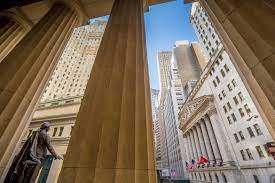
Defying last week’s five-day losing streak, Dow Jones started this week on a strong footing. On Monday, September 13, the Dow Jones Industrial Average (INDEXDJX: .DJI) surged 260 points or 0.8% closing at 34,869 levels.
It was the first time that Dow Jones ended in green in the last six trading sessions, which is more than a trading week. Similarly, the S&P 500 (INDEXSP: .INX) closed up 0.2% at 4,468.73. However, the tech-heavy Nasdaq Composite (INDEXNASDAQ: .IXIC) tanked for the fourth consecutive day closing in the red. On Monday, Nasdaq was down 0.06% closing at 15,105 levels.
The number of covid cases for a seven-day average was down to 136,000 for the last week. By the end of August, this average figure was 157,000. A recent report from Reuters also suggested that the US could authorize Pfizer‘s Covid shots for children between the 5-11 age group by October 2021.
The surge in the Delta variant cases in the US has put a shadow on the economic recovery. Many analysts are expecting a slowdown in economic growth. However, JPMorgan sees the downturn in delta variant cases as positive news. In a note to clients on Monday, JPMorgan’s Marko Kolanovic said:
“We retain a pro-risk allocation on strong global growth as the world continues to recover from the pandemic, accommodative policy, and continuing earnings surprises. Reopening of the global economy was delayed by the delta variant spread, but the delta wave is likely receding in the US and globally, and the pandemic recovery should restart”.
A Look onto the Performing Sectors
The bounceback on Monday wasn’t as strong since the market remained volatile. However, some sectors performed really well across indices. On Monday, eight out eleven sectors were positive on the S&P 500 with the energy sector leading.
The top three gainers in the energy sector were APA Corp, Marathon Oil and Occidental Petroleum. Furthermore, the airline and cruise operating stocks linked to the reopening also gained on Monday. This included Delta Air Lines Inc (NYSE: DAL) and Carnival Corp.
Inflation fears are also creating selling pressure on Wall Street. For the last month of August, product prices surged 07% with 8.3% gains year-over-year. This was also the biggest annual increase since November 2010.
Charlie Ripley, senior investment strategist for Allianz Investment Management said:
“Supply bottlenecks, inventory shortages, higher commodity prices, and higher shipping rates have all contributed to higher input costs. [Friday’s] data on wholesale prices should be eye-opening for the Fed, as inflation pressures still don’t appear to be easing and will likely continue to be felt by the consumer in the coming months”.
Later today, the US Labor Department will be releasing the numbers for Consumer Price Index (CPI). As per the economists on FactSet, consumer prices surged by 5.3% at an annual pace in August.
Ahead this month starting September 21, the Federal Reserve will be having a two-day policy meeting. Thus, investors will be closely watching the Fed commentary on the bond-buying program.











